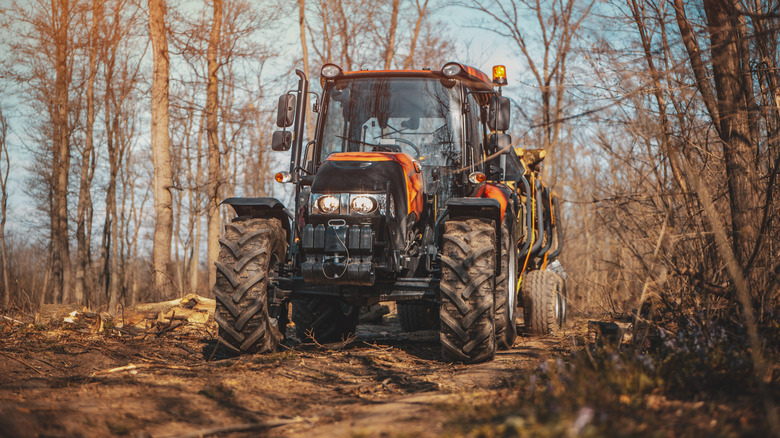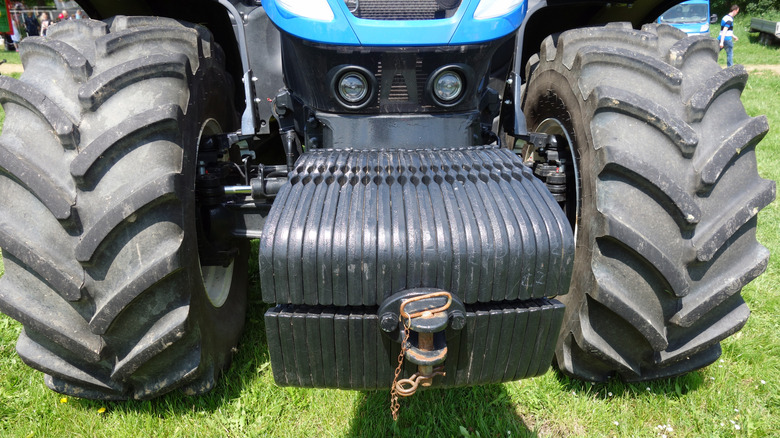Why Do Tractors Have Weights On The Front? Here's What They're For
It's easy to forget just how much a tractor goes through across any typical day. From pulling heavy machinery, to navigating rough terrain, to enduring harsh weather, there's no doubt that these machines work hard. Of the many components that go into aiding them in these tasks, tractor weights are among the most under-appreciated.
These attachments are typically located at the very front of the tractor towards the bottom of the machine. Tractor weights act as a counterbalance to the machine in its entirety, helping it maintain stability while on the job. As tractors are often required to move around on uneven ground while hauling large loads they would otherwise become too strained and give off a weaker performance without them. Whether on a smaller-scaled compact tractor from John Deere or on one of the most expensive tractors, these components ultimately benefit any and all tractors in the long run.
The shape and manner of adjusting these weights vary, from the stackable suitcase weight to front ballast boxes which can be filled with sand or tools, thus doubling as a form of storage. Whichever road you choose to go down, your tractor will be guaranteed greater fuel efficiency and an overall superior performance with the inclusion of these helpful attachments.
There are some important things to remember about tractor weights
Tractor weights can greatly benefit your tractor and its overall performance, similar to the water and beet juice-composed liquid components found in tractor tires. But don't think you can simply throw a weight or two on and forget about them. When used incorrectly, tractor front weights can do some serious damage to your machine, so it's important to make sure you're applying them the right way.
The consequences of improperly balanced tractor weights may not always be immediate but could be near impossible to reverse when they do hit. Over or underloading can occur which can result in weaker fuel efficiency, engine wear, and more strained components. This naturally leads to performance issues that can negatively affect your safety. When not well-balanced, a tractor can have trouble steering and braking, not only slowing you down on the job but also putting you at risk of injury in the case of an emergency.
As a result, it's crucial to ensure everything is well-balanced before taking your tractor out to work. As a rule of thumb, compact tractors should have more weight placed towards the back and less up front when dong ground work while loading tasks should have things be more equally distributed. Other elements to consider when adjusting include tire size, your travel speed, axle type, and the soil strength. Always consult your tractor's manual or contact the manufacturer to gain clarity on the needs of your specific machine.

